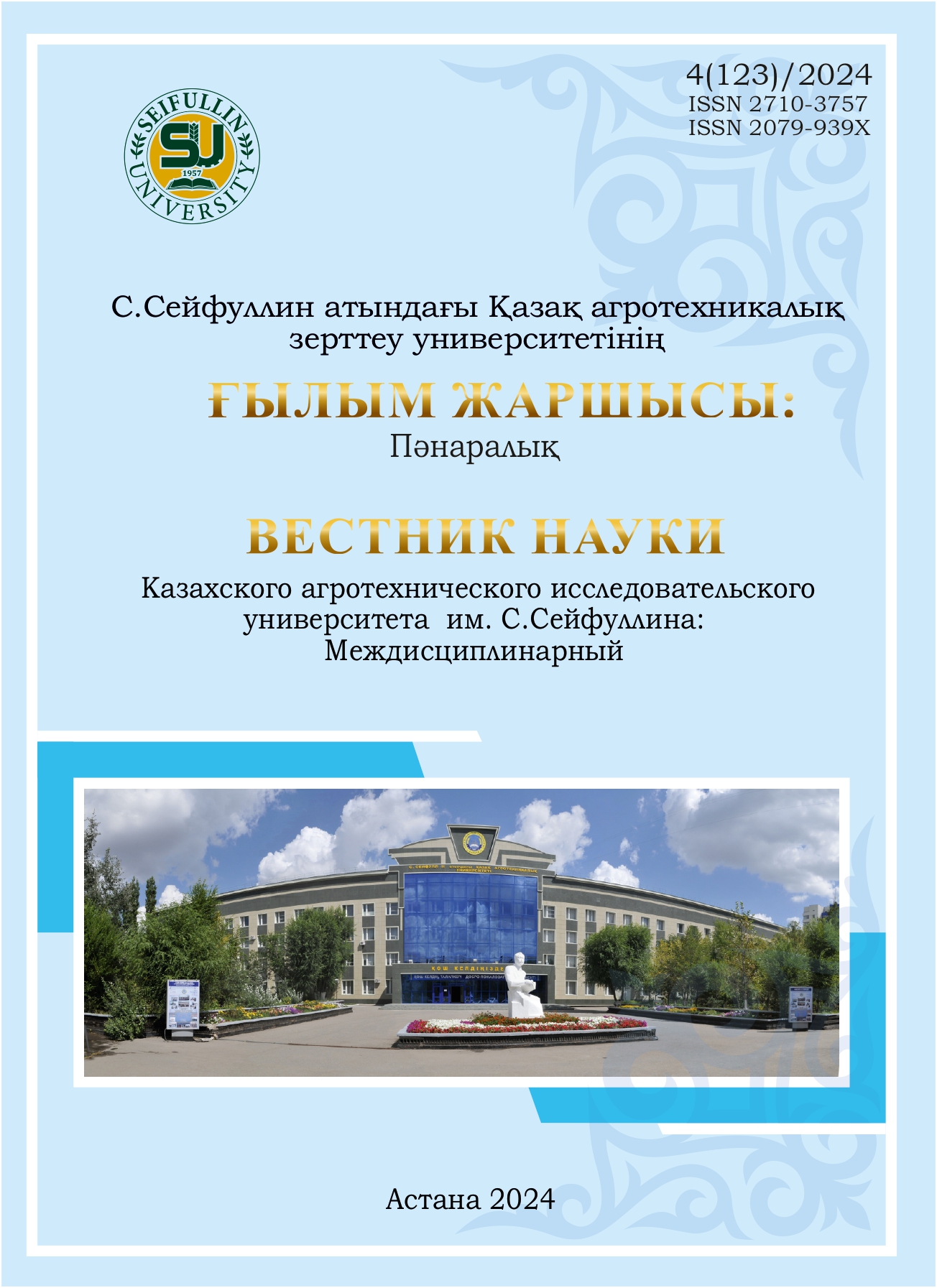Biological method of desalination of saline soils using cultivation of licorice (Glycyrrhiza Glabra L)
DOI:
https://doi.org/10.51452/kazatu.2024.4(123).1810Keywords:
Southern Kazakhstan; secondary salinization; salt accumulation; phytomelioration; licorice (Glycyrrhiza glabra L).Abstract
Background and Аim. The relevance of the research is that in the Turkestan region, where saline soils have become widespread, at present, in the conditions of ongoing droughts, the technical parameters of inter-farm and intra farm irrigation and collector-drainage networks do not correspond to design standards, which contributed to an increase in the loss of irrigation water. This led to intensive development of secondary soil salinization and a sharp deterioration of soil-ameliorative conditions of irrigated areas. In this connection, the purpose of research was to test and determine the effectiveness of the biological method of soil desalination using the cultivation of licorice (Glycyrrhiza glabra L).
Materials and Methods. Field studies on the production verification of the biological method were conducted on the territory of three pilot farms on an area of 600 m2, differing in different levels of soil salinity. Before planting preparation was carried out, moisture-charging irrigation was carried out. Licorice was planted vegetatively. At the beginning and at the end of the experiment, a salt survey of the farms' territory was conducted (1:2000), soil samples were taken from them at depths of 0-20, 20-50 and 50-100 cm. According to the latter data, the degree of soil salinity to a depth of 1 m was determined and salinity maps were compiled, which in comparison allowed determining the effectiveness of the biological method.
Results. As a result of the research, soil salinity maps were compiled, which showed the efficiency of cultivation of licorice on changes in the degree of soil salinity. The best efficiency of licorice was established on slightly saline soils, where over two vegetation seasons the concentration of salts decreased by half, from 0.501% to 0.243%, i.e. the original soil became practically non-saline. The moderately saline soils of the second pilot plot at the end of the vegetation period of licorice became highly saline, which resulted in a two-fold increase in the area of the latter, affecting the upper soil horizon.
Conclusion. On three pilot plots, differing in the degree of salinization, testing of the biological method showed the effectiveness of licorice on slightly saline soils. It has been established that in conditions of weak secondary soil salinization, licorice reduces the degree of soil salinization to a nonsaline level, which makes it possible to involve saline lands that have been withdrawn from agricultural use. Further research will be aimed at studying the effects of licorice on the nutrient and salt regimes of not only neutrally saline soils, but also alkaline ones.

